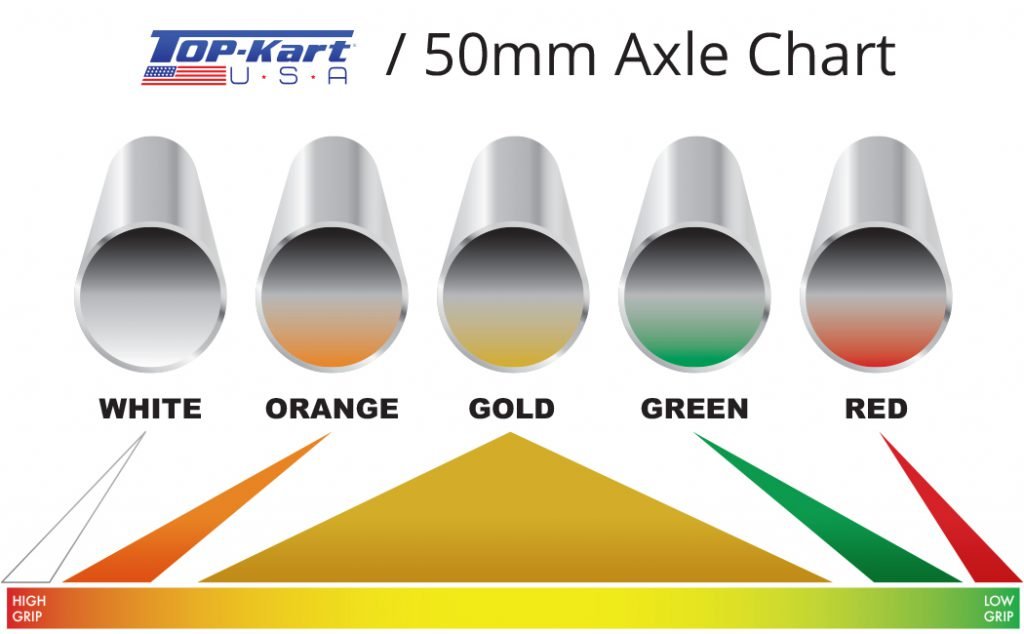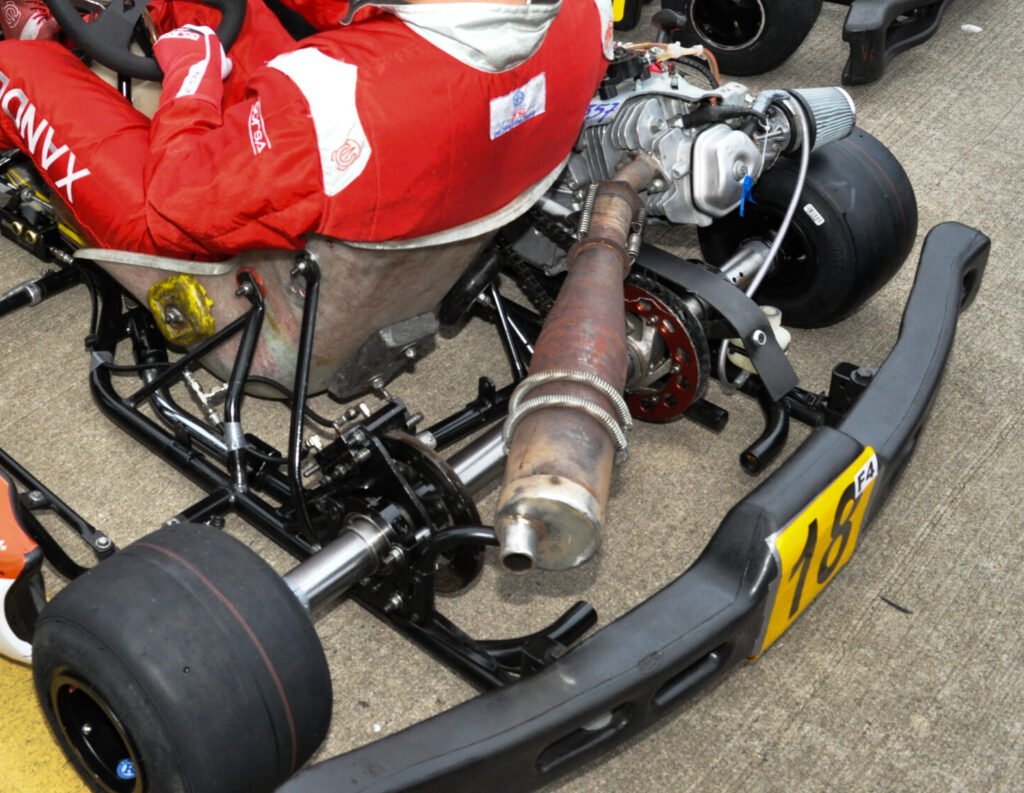The Ultimate Guide for Go Karting Rear Axle: Everything You Need to Know
The rear axle of a go-kart plays a crucial role beyond simply connecting the wheels. It is a key element that influences the kart’s handling, speed, and overall performance. Selecting the appropriate rear axle can improve your racing capabilities. This comprehensive guide will give you an understanding of go-kart rear axles, from the fundamental concepts to advanced performance tuning techniques.
Table of Contents
- Introduction
- Understanding the Go Kart Rear Axle
- Axle Performance on Different Track Conditions
- Common Problems and Solutions in Go-Kart Axle Tuning
- Driving Feel and Axle Selection
- Practical Tuning Tips for Go-Kart Axles
- Common Issues and Solutions
- Conclusion
Introduction
Kart racing requires precision and the proper equipment to reach peak performance on the track. One of the essential components impacting a kart’s handling and speed is the axle. Not all kart axles are created equal; they vary in size and hardness, each influencing the kart’s grip, maneuverability, and overall performance. Grasping the complexities of kart axles can significantly enhance your racing experience, enabling you to choose the right axle for varying track conditions and ensuring your kart is always primed for competition.
Understanding the Go Kart Rear Axle
What is a Rear Axle?
Kart axles are the link between the rear wheels, significantly affecting how a kart handles various track conditions. Although at their most basic, axles are tubes connecting the rear wheels, their role is much more complex. In the absence of traditional suspension systems, the axle serves as a shock absorber, determining the kart’s response to turns and the amount of grip it can achieve. This unique function makes selecting and maintaining the axle crucial for any dedicated kart racer.
The axle is essentially the backbone of the kart’s rear assembly. It connects the wheels to the frame and the engine via the transmission assembly, which includes the gear wheel, chain, and sprocket. The axle is responsible for providing traction, causing the tires to spin. On straight paths, the axle remains nearly parallel to the ground, but during turns, centrifugal forces and steering angles cause it to tilt, lifting the rear inside tire off the ground. This movement compensates for the lack of a rear differential, allowing the kart to navigate turns efficiently.

Types of Rear Axles
Kart axles come in a wide range of dimensions and hardness levels, each affecting their performance characteristics. Typically made from various steel alloys, each material offers distinct advantages. Axles differ in length and diameter as well, influencing the kart’s handling and grip on the track. Understanding these variations is essential for optimizing your kart’s performance based on specific racing conditions.

Hardness Levels:
-
Hard Axles: Harder grade axles are essential when additional stiffness is needed, particularly on hot and sticky tracks where maximum traction is crucial. These axles help reduce excessive grip, allowing the kart to distribute engine power more effectively during turns. Hard axles are especially beneficial for larger, heavier drivers who require increased stability and grip.
Standard Axles: Most new go-karts or standard models are equipped with medium or standard axles. These axles offer balanced performance suitable for a variety of track conditions, making them an excellent starting point for new karters. Standard axles strike a good compromise between flexibility and rigidity, offering versatility for different driving styles and track environments.
Soft Axles: Softer grade axles are designed to flex more, reducing grip but enhancing the kart’s ability to handle bends smoothly. These axles are ideal for cold and slippery tracks where increased flexibility can improve grip and control. Smaller, lighter drivers may also find soft axles advantageous, as they provide a more manageable and responsive handling experience.
Length Variations:
Long Axles: Longer axles are advantageous on tracks with wide, sweeping bends. They offer increased stability, enabling the kart to maintain higher speeds through corners. If your kart is stable but lacks speed in bends, a longer axle might be the ideal solution.
Short Axles: Shorter axles excel on tracks with tight, twisty corners. They improve the kart’s maneuverability, allowing for quicker rotations at the apex and better acceleration out of bends. However, if a shorter axle causes instability, switching back to a standard or longer axle might be necessary.
Standard Length Axles: Standard length axles provide balanced performance suitable for most driving conditions. They are typically used in almost all of driving scenarios and are a dependable choice for new karters. If the kart becomes unstable, reverting to a standard length or longer axle can help restore stability.
Axle Performance on Different Track Conditions
Rubberized Tracks vs. Low Grip Tracks
Selecting the appropriate axle for different track conditions is essential to achieve optimal performance. The right axle can significantly impact how your kart handles varying surfaces.
Rubberized Tracks:
- Rigid Axles: On rubberized tracks, where the surface is grippy due to the accumulation of rubber, harder axles are advantageous. They free up the chassis, reducing excessive grip and allowing for improved performance in bends.
Low Grip Tracks:
- Softer Axles: On low grip tracks, a more softer axle is preferred. soft axles enhance grip on the asphalt, leading to better handling and control, crucial for maintaining stability and performance on slick surfaces.

Common Problems and Solutions in Go-Kart Axle Tuning
Hot and Sticky Tracks
On hot and sticky tracks, a standard medium-grade axle might cause the kart to grip to much in slow corners. Switching to a harder grade axle can help by reducing excessive grip and allowing the kart to unload engine power more effectively.
Solution:
- Use a harder axle to reduce grip and improve performance in bends.
Cold and Slippery Tracks
Cold and slippery tracks pose a different challenge, where the standard axle might not provide enough grip. Switching to a softer grade axle can enhance grip, making the kart easier to handle.
Solution:
- Use a softer axle to increase grip on slippery surfaces.
Unstable Kart Behavior
Unstable behavior, such as excessive lifting into corners or instability under braking, can often be attributed to the axle being too rigid or too short. Adjusting the axle grade or length can help stabilize the kart.
Solution:
- If the kart is unstable under braking, use a softer or longer axle.
Driving Feel and Axle Selection
Driving Indicators of Proper Axle Selection
Identifying the right axle can often be determined by the kart’s handling characteristics. If the axle generates too much grip, it can lead to understeering when entering bends, as the rear grips too much, negatively affecting the front. If the kart jumps during braking, it indicates that the axle is too rigid, transmitting chassis forces to the tires instead of absorbing them.
Practical Tuning Tips for Go-Kart Axles
Adjusting for Driver Size and Weight
Driver size and weight significantly influence axle selection. Larger, heavier drivers may require harder axles for better stability and grip, while smaller, lighter drivers might benefit from softer axles for more manageable handling.
Axle Adjustments Based on Track Evolution
Track conditions can evolve throughout a race weekend. As the track rubbers up and gets cleaner, adjustments to the axle might be necessary to maintain optimal performance.
Tips:
- Start with a standard or softer axle on a slippery track.
- Move to a harder axle as the track conditions improve.

Common Issues and Solutions
Identifying and Replacing Worn or Bent Axles
Regular inspection of axles for signs of wear and tear is crucial. Key indicators include deformations around the bolt keyways and difficulty in disassembling bearings due to the axle no longer being round.
Maintenance Tips:
- Check for oval shapes or cracks around keyways.
- Replace axles that show significant wear or deformation.
Attempting to straighten a bent axle is not recommended as it compromises the material’s integrity, potentially leading to further issues. Always replace bent or excessively worn axles to ensure safety and performance.
Impact of Bent Axles on Performance
A bent axle can significantly affect a kart’s handling and overall performance. The vibrations caused by a bent axle can disrupt the kart’s balance, leading to poor handling and reduced speed. Additionally, these vibrations can negatively impact the carburation and operation of components such as the carburetor membranes and float in KZ karts.
Can a bent axle be straightened?
There are several doubts about go-kart axle tuning. One common, is that a bent axle can be straightened. In reality, attempting to straighten a bent axle compromises its integrity and should be avoided.
By understanding these elements and implementing the right solutions, you can ensure your kart is always performing at its best, no matter the track conditions.
Conclusion
Kart axles are a critical component in determining the performance and handling characteristics of a go-kart. Understanding the various types of axles, their impact on different track conditions, and how to identify and replace worn or bent axles is essential for any serious kart racer. By adhering to expert advice and performing regular maintenance, racers can ensure their karts operate at peak performance, leading to better race results and a more enjoyable driving experience.
Choosing the right axle involves considering factors such as material, hardness, length, and the specific demands of the track. Regular inspections and timely replacements are crucial for maintaining both performance and safety. As technology and techniques evolve, staying informed about the latest advancements in axle design and maintenance will continue to be vital for success in kart racing.
For more in-depth articles and guides on karting and motorsport engineering, visit our blog and join our community of motorsport enthusiasts and professionals.



